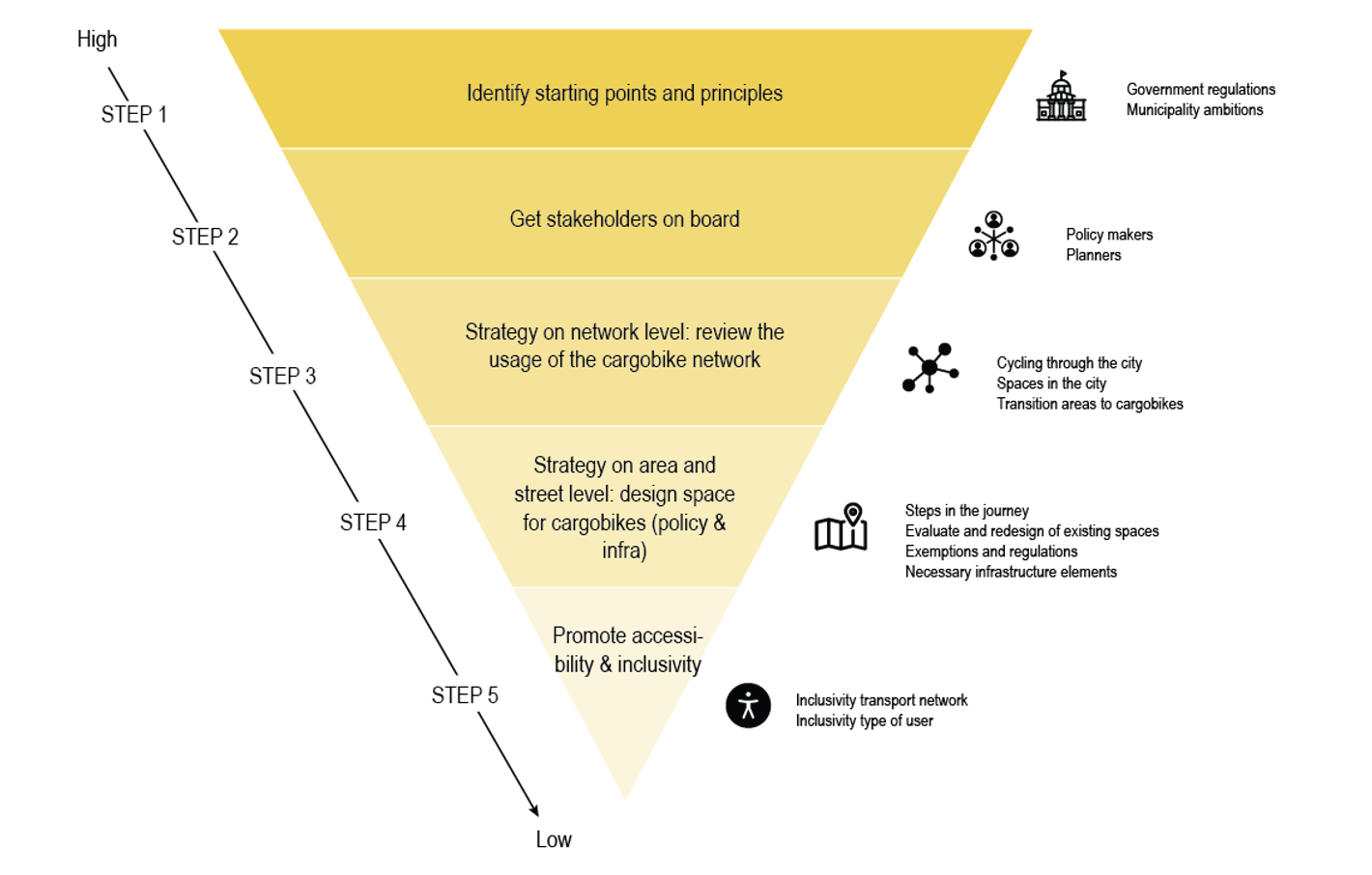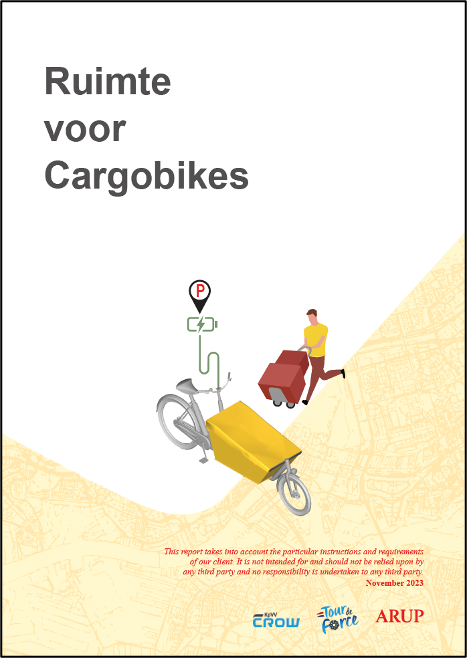Space for Cargo Bikes
27 February 2024 - Author: Naomi KloostraA revolution is underway in modern cities, in which life moves faster every day. Cargo bikes, once a rare sight on city streets, have emerged as champions of last mile delivery and urban distribution, reshaping urban logistics. As they meander through traffic, these pedal-powered workhorses offer a glimpse into a future where sustainability and efficiency go hand in hand.
Underlying this transformation is a pioneering initiative, a joint venture by Arup in collaboration with the city of Rotterdam and cargo bike specialist Jos Sluijsmans. Tasked by Tour de Force, their mission was clear: create space in the street landscape for the rapidly growing fleet of cargo bikes, announcing a new era of mobility and logistics.
To understand the practical aspects of integrating cargo bikes into urban logistics, our study examines the current environment for cargo bikes in Dutch cities to propose changes to make it more cargo bike friendly.

Figure 1. Three layers in the research
The research contains an analysis of the use of cargo bikes based on three layers as mentioned in figure 1, as well as the needs for (short-term) loading, unloading and parking in different types of areas in the city. Moreover, it introduces a flexible design systematics which can be used by municipalities to evaluate their own situation and find opportunities for cargo bikes. In collaboration with the municipality of Rotterdam, the system has been applied to specific locations in the city and further refined through this application and work sessions with stakeholders.

Figure 2. Day in the life of a package delivery service cargobiker
In the analysis, there are three layers defined: the step in the journey, the user, and the area type, see figure 1. The study identifies the daily challenges of three types of cargo bike users by examining their journeys and looking at the challenges they encounter as shown in figure 2. The phases in the cargo bike chain defined are: loading/unloading, parking, charging and transition (between moving and standstill), see figure 3. User group needs are mapped into three distinctive typologies: a mixed traffic shopping, a pedestrian zone, and a residential zone. These areas are based on actual streets in Rotterdam: a city with an ambitious zero-emission and cycling logistics agenda. Each of these combinations of layers contributes to unique traffic dynamics and opportunities for cargo bikes. A five-step guidance is developed as a practical tool for policymakers to effectively integrate cargo bikes into their logistics strategies, emphasizing stakeholder inclusion from municipal to local level.

Figure 3. Steps in the journey
The guide proposes ways to:
- Define guiding principles and goals;
- Engage stakeholders;
- Integrate cargo bikes into the city’s urban logistics network;
- Design streets and neighbourhoods;
- Provide accessibility and inclusivity for user types.
The steps are also defined in the figure 4.

Figure 4. Design Systematics
In today’s highly competitive commercial landscape, efficiency is paramount. The integration of cargo bikes represents a new era for businesses looking to optimise their operations and reduce environmental impact. Cargo bikes are an attractive solution. However, the challenges are considerable. Without a coherent national framework, municipalities struggle with complex regulations and infrastructural constraints.
In this regard, we introduce the “Space for cargo bikes guide” – a comprehensive resource designed to support both businesses and municipalities in making the right choices. Drawing upon real-world case studies in Rotterdam, the guide offers practical insights into how cities can successfully integrate cargo bikes into their urban logistics environment. Through scenario drawings, cross-sections, and visualizations, municipalities gain valuable perspectives on transforming urban spaces to accommodate cargo bikes effectively.
As the global movement towards sustainable urban transportation gains momentum, the integration of cargo bikes represents a significant step towards realizing the vision of cleaner, greener, and more resilient cities.
Bicycles are emerging as advocates of progress and promise a future of sustainable commerce. Using the “Space for cargo bikes guide”, businesses and municipalities engage in a transformative journey towards a more sustainable and prosperous future.
Complementing the report, Arup developed a toolbox, “International research promoting Cargo Bike Integration for Urban Logistics”. It contains a set of practical strategies and measures to promote the shift towards cargo bikes in urban logistics.

Original (Dutch) report can be found here: Ruimte voor cargobikes – Fietsberaad
Any questions? Feel free to send us an email!


